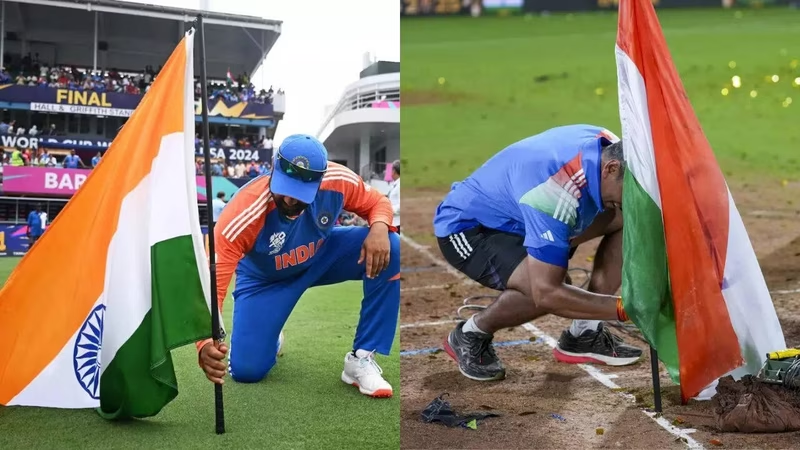In a moment that fused past glory with present triumph, India women’s head coach Amol Muzumdar recreated Rohit Sharma’s legendary “Jhanda gaad diya” celebration after the team’s dominant 52-run victory over South Africa in the ICC Women’s World Cup 2025 final. The iconic gesture—once etched into cricketing folklore during India’s 2024 T20 World Cup win—now symbolizes a new chapter: the rise of women’s cricket as a powerhouse of Indian sport.
“Jhanda Gaad Diya”: A Celebration Reborn
As the final wicket fell in Dubai, Muzumdar dropped to one knee on the outfield, miming the act of planting an invisible Indian flag into the pitch—just as Rohit Sharma had done months earlier in Barbados. The crowd erupted. Teammates cheered. On social media, the clip went viral within minutes, with fans dubbing it “the passing of the torch.”
“I couldn’t help it,” Muzumdar later told reporters with a grin. “When you’ve waited decades for this moment, you borrow from the greats. Rohit did it for the men. Today, our girls earned the same right.”
More Than Just a Gesture
This wasn’t mere theatrics. For Muzumdar—a former Mumbai stalwart with a modest international career—the celebration reflected a deeply personal mission. Appointed head coach in late 2023, he inherited a team brimming with talent but lacking in structure, especially in fitness and fielding.
His first move? A complete overhaul of support staff, bringing in specialized coaches for strength, agility, and ground fielding. “We stopped treating women’s cricket as ‘lesser,’” he said. “Same standards. Same intensity. Same expectations.”
The Making of a Champion Team
Under Muzumdar’s guidance, India’s fielding transformed from a liability into a weapon. In the 2025 World Cup, they recorded the tournament’s highest number of run-outs (7) and saved an average of 18 runs per match through sharp ground fielding—stats that proved decisive in tight games.
Players also underwent mandatory fitness benchmarks. Those who missed targets faced extra sessions—not as punishment, but as investment. “He didn’t yell,” said all-rounder Deepti Sharma. “He just said, ‘If you want to win a World Cup, your body must believe it before your mind does.’”
A Watershed Moment for Indian Cricket
Muzumdar called the victory “a watershed moment—not just for women’s cricket, but for Indian sport as a whole.” And he’s right. This win wasn’t a fluke; it was the culmination of systemic change, cultural shift, and unwavering belief.
From equal match fees to charter flights, from WPL exposure to centralized contracts, the ecosystem has matured. But Muzumdar insists the real change happened in the players’ eyes. “You could see it after the 2022 final loss—they were heartbroken but not defeated. This time, they walked in like conquerors.”
Legacy in the Making
By channeling Rohit Sharma’s iconic pose, Muzumdar did more than pay homage—he linked two historic victories into one national narrative. The men’s T20 World Cup and the women’s ODI World Cup, won within a year of each other, now stand as twin pillars of India’s cricketing golden age.
And as fireworks lit up Dubai’s night sky, one image remained: a coach on one knee, planting a flag not of ego, but of equity, excellence, and long-awaited pride.
